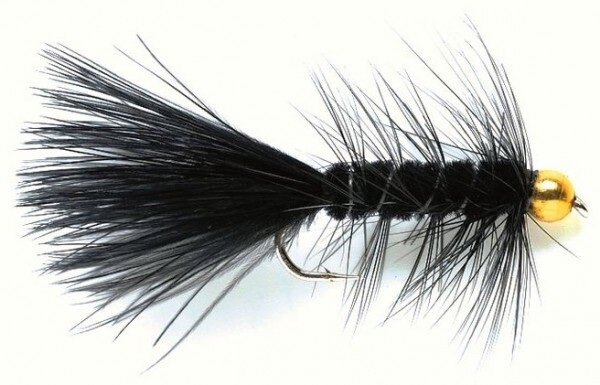The wooly bugger is not just a fly; it's an institution in the world of fly fishing. Its inception brought forth a lure that mimics a plethora of aquatic and terrestrial prey, from leeches and larvae to small baitfish. This essay aims to unfold the strategies behind effectively fishing a wooly bugger, ensuring anglers can leverage its versatility to entice a wide range of fish species.

Gear and Setup
The foundational step to successfully fishing a wooly bugger involves selecting the appropriate gear. A 5 to 7 weight fly rod is ideal, providing the necessary balance of power for casting and finesse for presentation. A matching reel equipped with either a floating or sinking line complements this setup, depending on the water depth and where fish are feeding. A 9 to 12-foot leader tapered down to a 4X to 6X tippet ensures the wooly bugger presents naturally, minimizing drag and spooking of fish.
Choosing the Right Wooly Bugger
The effectiveness of a wooly bugger often hinges on choosing the right variant for the conditions at hand. Size, color, and weight play pivotal roles in matching the hatch or appealing to the predatory instincts of target species. In clearer waters or when imitating smaller prey, opt for smaller, more subdued colors. Conversely, in stained waters or targeting aggressive feeders, larger, brighter patterns can be more productive. Carrying a selection ensures adaptability, a key to success with this fly.
Casting Techniques
Casting a wooly bugger with precision and subtlety is crucial. Overhead casts are versatile and effective in most situations, allowing anglers to cover water and place the fly accurately. Roll casts come in handy when fishing tight spots or under overhanging vegetation, where traditional casting is hindered. Mastery of these techniques ensures the wooly bugger lands softly, crucial for not startling fish and for imitating the gentle descent of natural prey.
Retrieval Techniques
The retrieval of a wooly bugger is where the magic happens, bringing the fly to life in the water. A strip retrieve, consisting of short, sharp tugs, imitates the darting escape of prey. For a more sedate presentation, mimicking grazing or slowly moving prey, a slow, steady retrieve can be more effective. Observing water conditions and fish behavior is vital, as is being prepared to adjust techniques on the fly. Sometimes, the inclusion of pauses or changes in speed triggers strikes from following fish.
Setting the Hook and Fighting the Fish
When a fish strikes a wooly bugger, setting the hook promptly yet gently ensures a solid hookup without breaking the tippet. A firm, upward lift of the rod is often sufficient. Fighting the fish requires a balance of maintaining pressure to prevent the fish from throwing the hook and allowing it to run when necessary, using the reel's drag system to tire it out efficiently. This phase of the encounter tests the angler's skill and the gear's mettle, culminating in the thrill of landing the fish.
Conclusion
Fishing a wooly bugger effectively is an amalgamation of selecting the right gear, understanding the nuances of various retrieval techniques, and adapting to the conditions at hand. This fly's inherent versatility makes it a staple in the fly fisher's arsenal, capable of enticing a wide array of fish species across different environments. Mastering the art of fishing a wooly bugger not only enhances an angler's skill set but also deepens their appreciation for the subtleties of fly fishing, making every cast a potential story of success. Through practice and patience, the wooly bugger becomes more than a lure; it's a bridge to countless memorable encounters on the water.

